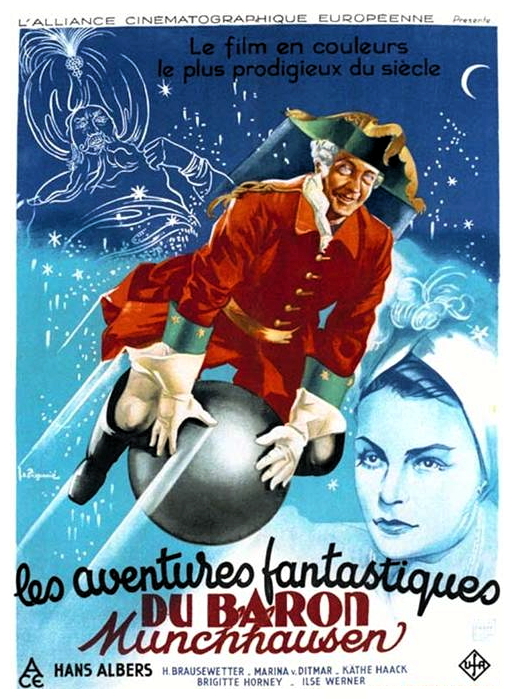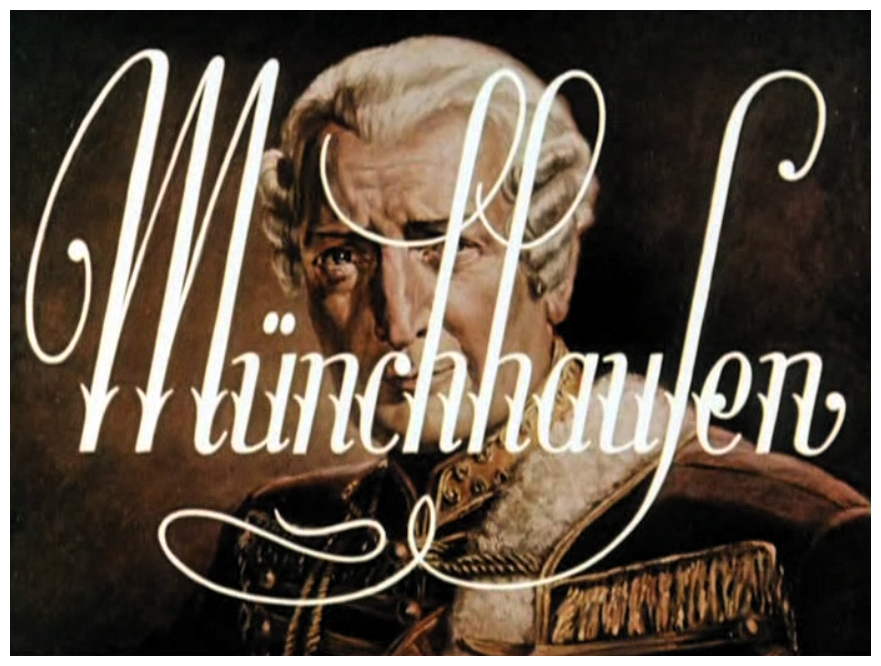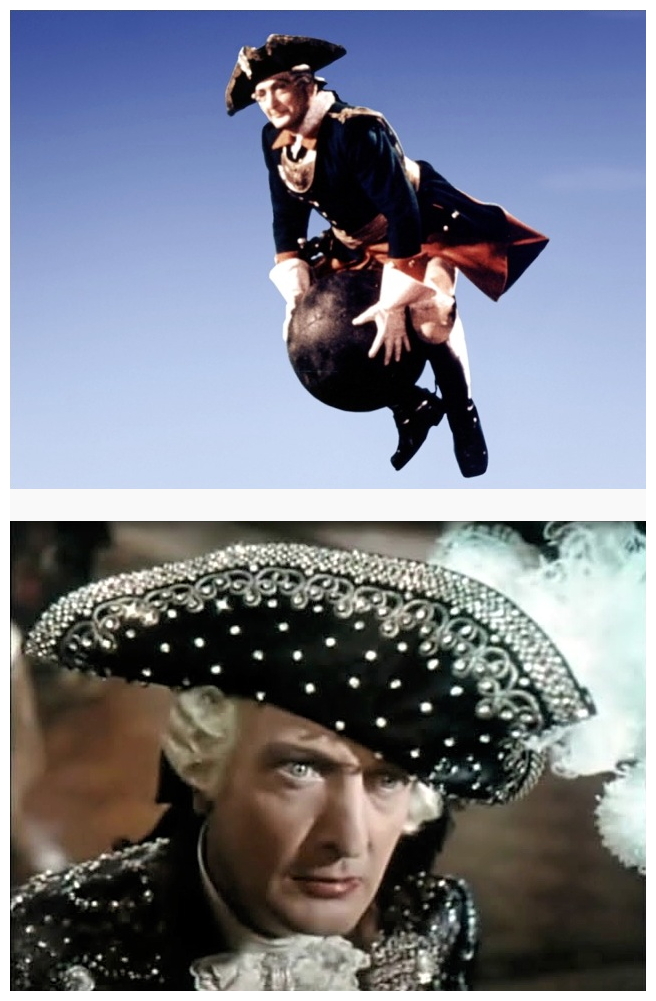
SYNOPSIS:
“This lavish, impudent, adult fairy tale takes the viewer from eighteenth-century Braunschweig to Saint Petersburg, Constantinople, Venice and then to the moon, using ingenious special effects and stunning location shooting.” (courtesy IMDB)
REVIEW:
It may seem surprising that, in Germany, the war years bred an appetite for the Light Fantastic, just as they did in Hollywood. The twenty-fifth anniversary of the famous Ufa Studio was due in 1943 and Münchhausen (1943) was the big-budget spectacular designed to celebrate the event. Rudolph Erich Raspe‘s tall stories about the eccentric baron (inspired by the very real Hieronymus Karl Friedrich von Münchhausen 1720-1797) were extraordinarily popular in German-speaking countries and beyond, and several different film versions have been made, beginning in 1911 in France with pioneer filmmaker Georges Méliès. French animator Emile Cohl produced a version of the stories using silhouette cut-outs in 1913, Italian director Paolo Azzurri filmed The Adventures Of Baron Munchausen (1914) and British director F. Martin Thornton made the short film The New Adventures Of Baron Munchausen (1915).

More animated versions were produced by Richard Felgenauer in Germany in 1920, Paul Peroff in the United States in 1929 and, in the same year, the Soviet Union released the cartoon Adventures Of Munchausen (1929) by Daniel Cherkes. One of the best was the Czech version entitled Baron Münchhausen (1961) which featured a mixture of live-action and animation, and the most famous version nowadays is probably Terry Gilliam‘s much-troubled production of The Adventures Of Baron Munchausen (1988). Despite the fact that it nearly doubled its original budget of US$23.5 million and created skepticism around Gilliam’s fiscal reliability, his version earned a cult following. Focusing on the fantastic tales told by a pathological liar as he nears death, this big-budgeted fantasy features an immense ensemble cast, fantastical imagery and a whimsical narrative.

Due to issues with the film’s production company, the Gilliam version received a limited release in the United States but, despite all this, it still managed to receive acclaim for its imagination, originality and humour – but I don’t wish to digress. A much as I love Gilliam’s effort, my favourite is still the German version simply entitled Münchhausen (1943) which was known as The Adventures Of Baron Munchausen in the USA. The director of this German film, a Hungarian named Josef von Baky, makes splendid use of the melancholy pastel tones of Agfacolor in this wry, erotic, adult fantasy. The film begins at a twentieth-century costume ball whose host, Münchhausen (Hans Albers), turns out to be extremely old even though he looks young and handsome. He tells us he was given the secret of eternal life by the magician Graf Cagliostro (Ferdinand Marian) for whom he once did a favour. The film flashes back to the events of Münchhausen’s youth, which is packed with witty incident, by no means all fantastic.

When magical effects do occur, they are treated with a nice matter-of-factness: riding a cannonball into a Turkish fort; a runner who can speed from Turkey to Vienna and back in an hour; a trip to the Moon where people’s heads live separate lives from their bodies; a hunting horn whose solemn note gets frozen inside it, to emerge later as it warms by a fire; a ring of invisibility; a portrait that comes to life; and a sword-fight in Venice featuring flashing light-sabres that out-perform those seen in certain franchises. Münchhausen proves to be more successful romantically than the plump and elderly Casanova (Gustav Waldau), and the Baron gets along very nicely with Catherine the Great (Brigitte Horney), Isabella D’Este (Ilse Werner) of Venice and other great ladies. Elegant, stylish, free-spirited, but a touch cold-blooded, the film seems cautiously to belong to the anti-Nazi cause, though its political references (such as reminiscences of a revolution in Mexico) are heavily coded.

The spectacle is certainly lavish but somewhat stilted, being produced on the orders of Nazi Joseph Goebbels, Reichsminister of propaganda and chief of the German Ufa Studios, to mark its anniversary, and his influence is evident in the way that all other nationalities are shown as comical. Screenwriter Erich Kästner is often billed as ‘Berthold Bürger’ but, in fact, the film has no writing credit whatsoever. Kästner was a banned author in Nazi Germany and his books were among those burned in 1933, which was the reason for the lack of writing credit here. Goebbels gave Kästner special permission to write the script, on which the author was actually named as Berthold Bürger. However he also gave instructions to the German press never to mention the real author of the script nor to mention the name of Berthold Bürger, therefore no writing credits appear in the movie. I’ll allow you time to contemplate the trials and tribulations attached to filmmaking under Nazi rule while I make my fond farewells. Please be sure to return next week with a stout heart, an iron stomach and a titanium bladder for another head-melting romp through the garden of unearthly delights known as…Horror News! Toodles!

Münchhausen (1943)
 Horror News | HNN Official Site | Horror Movies,Trailers, Reviews
Horror News | HNN Official Site | Horror Movies,Trailers, Reviews
